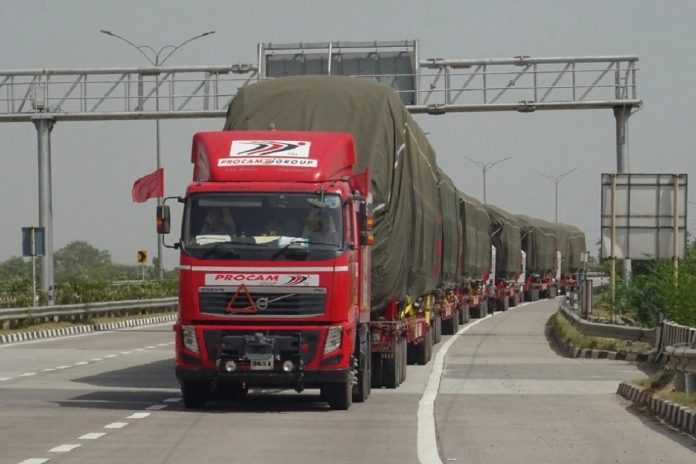Snapshot
With the delivery of the semi-high-speed aerodynamic trainsets at Duhai depot, the 17 km priority section on the Delhi-Ghaziabad-Meerut corridor will be commissioned after the mandatory trial run.
The first trainset of regional rapid transport system (RRTS) corridor reached Duhai Depot yesterday (13 June) travelling from Savli in Gujarat by road.
With the delivery of the semi-high-speed aerodynamic trainsets at Duhai depot, commissioning of the 17 km priority section on the Delhi-Ghaziabad-Meerut corridor is slated to happen after the mandatory trial run.
National Capital Region Transport Corporation (NCRTC) is planning to commence trial runs on the priority section of the Delhi-Ghaziabad-Meerut RRTS corridor, the first RRTS corridor in India, by the end of this year.
The trainset was loaded on a trailer from the manufacturing plant located in Savli, Gujarat and brought to Duhai via road. In its journey to reach Duhai Depot, the train has travelled through three states, Rajasthan, Haryana and finally Uttar Pradesh.

All the six coaches of the trainset were loaded on six separate trailers. On reaching the Duhai depot, they were unloaded with the help of a crane and in the coming days, the trainset will be assembled in the depot itself.
Tracks have already been completed for its arrival at the Duhai depot and preparations are going on for the testing. For the operation of RRTS trains, an administrative building has been built in the Duhai depot itself.
The first trainset of RRTS was handed over to NCRTC earlier this month on 7 May 2022 at an event organised at the manufacturing site in the presence of senior officials of Housing and Urban Affairs and NCRTC.
The first trainset of RRTS was handed over to NCRTC earlier this month on 7 May 2022 at an event organised at the manufacturing site in the presence of senior officials of Housing and Urban Affairs and NCRTC.
For the testing and the maintenance of the RRTS trains, 11 stabling lines, two workshop lines, three internal-bay lines (IBL) and one heavy internal cleaning (HEC) line are being constructed.
The lightweight trainsets, with their sleek and modern design, will be equipped with a regenerative braking system and compatible with automatic train protection (ATP), automatic train control (ATC), and automatic train operations (ATO).
The regenerative braking system is an important feature of these trains, which generates electricity when the brakes are applied and the power goes back to the electric grid through the overhead traction of the train system.


